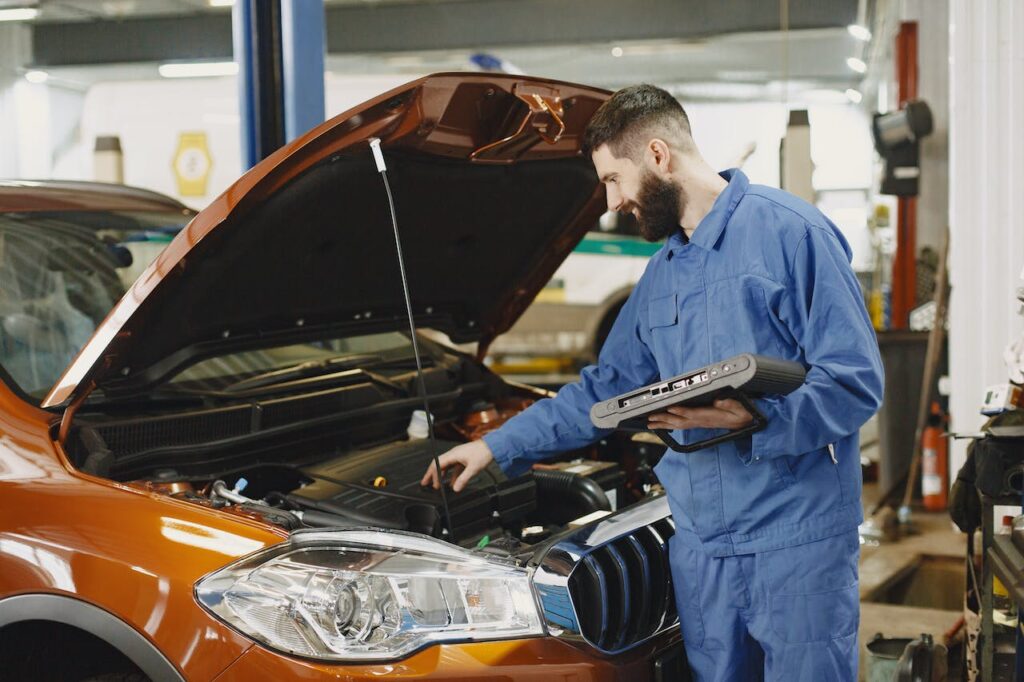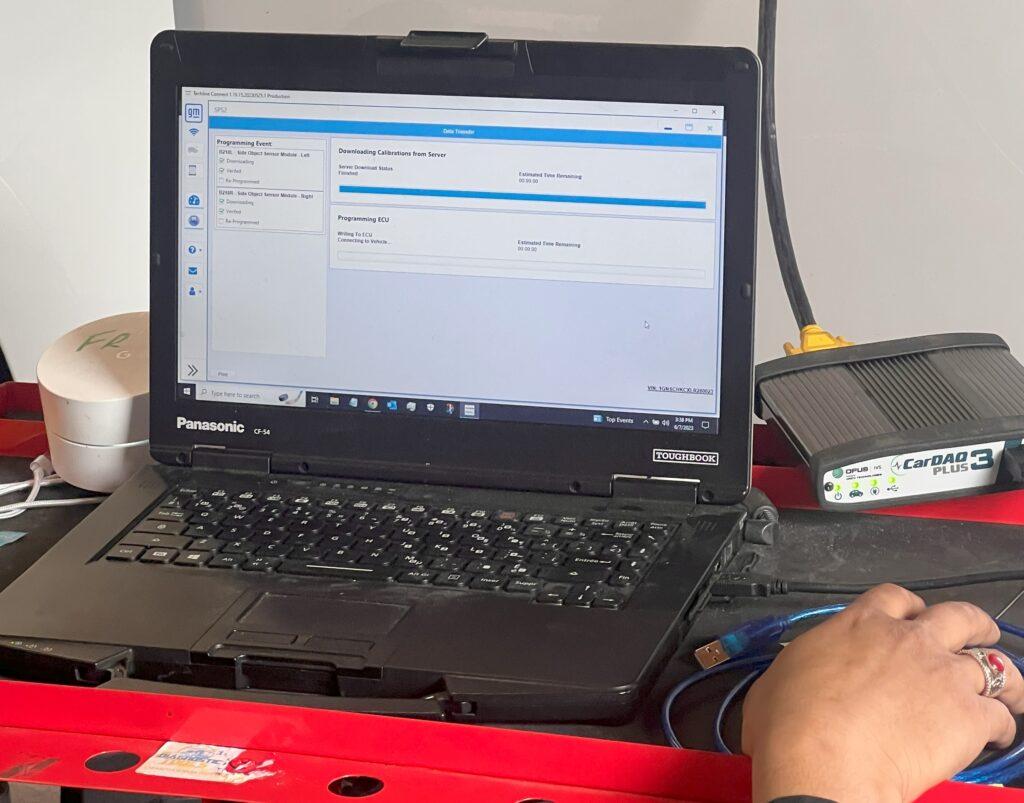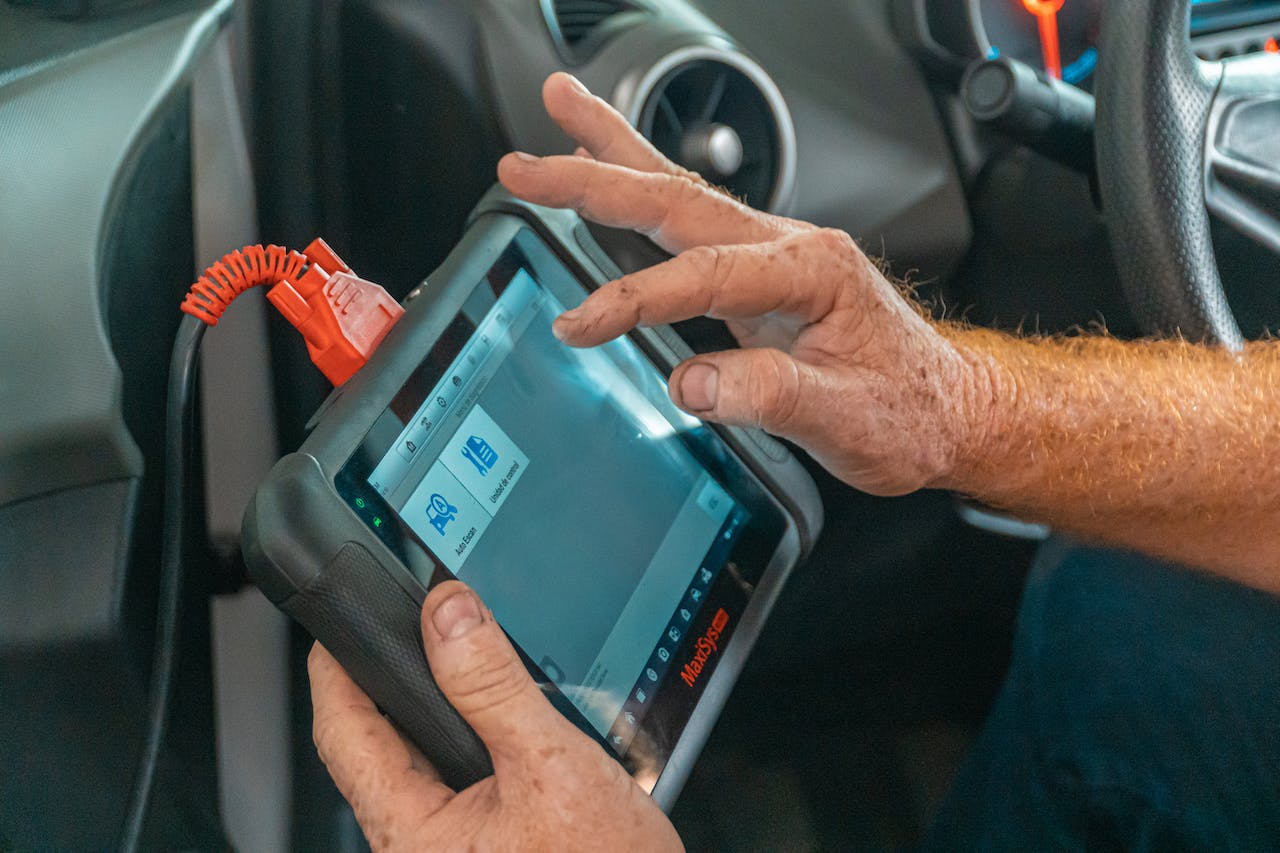In the dynamic landscape of automotive technology, one often overlooked aspect that significantly impacts fuel efficiency and emission standards is sensor calibration. As vehicles become more advanced and California continues to lead the charge in stringent emission regulations, understanding the role of sensor calibration becomes paramount. This article explores the intricate relationship between sensor calibration, fuel economy, and maintaining emission standards in California.
Background: California’s Stringent Emission Standards

California’s emission standards stand as a hallmark of environmental commitment and regulatory leadership. Renowned for their stringency, these standards set by the California Air Resources Board (CARB) surpass federal requirements, reflecting the state’s dedication to reducing air pollution and addressing climate change. Established to combat the adverse effects of vehicle emissions, particularly in densely populated areas, these standards encompass strict limits on pollutants such as nitrogen oxides (NOx), particulate matter, and greenhouse gases. California’s position as a trailblazer in emission standards not only shapes the automotive industry’s landscape within the state but also serves as an influential force, inspiring other regions to adopt similarly robust measures for a cleaner and more sustainable future.
I. The Role of Sensors in Modern Vehicles

Nowadays, automotive engineering have intricate solutions to overcome challenges in vehicle use. Contemporary vehicles now boast an extensive array of sensors to support their Advanced Driver Assistance Systems (ADAS), each meticulously designed to monitor and regulate various facets of engine performance. These sensors serve as the technological backbone, facilitating the seamless interaction between different components of the vehicle’s internal systems. Three key sensors—oxygen sensors, mass airflow sensors, and throttle position sensors—stand out as crucial contributors to the overall efficiency and environmental performance of modern automobiles.
Oxygen Sensors:
- Function: Oxygen sensors, commonly referred to as O2 sensors, are responsible for monitoring the oxygen levels in the exhaust gases. This data is transmitted to the engine control unit (ECU), facilitating the fine-tuning of the air-fuel mixture for optimal combustion.
- Impact on Calibration: Incorrect calibration of oxygen sensors can lead to inaccurate readings, resulting in suboptimal adjustments to the air-fuel ratio. This, in turn, may lead to inefficient combustion, reduced fuel efficiency, and increased emissions.
Mass Airflow Sensors:
- Function: Mass airflow sensors measure the amount of air entering the engine, enabling the ECU to determine the appropriate fuel injection for optimal combustion.
- Impact on Calibration: When inaccurately calibrated, mass airflow sensors can misinform the ECU about the volume of air entering the engine. This discrepancy can disrupt the air-fuel ratio, leading to compromised combustion efficiency and diminished fuel economy.
Throttle Position Sensors:
- Function: Throttle position sensors monitor the position of the throttle valve, indicating how much the driver is depressing the accelerator pedal. This information aids in adjusting fuel injection and optimizing engine performance.
- Impact on Calibration: Incorrect calibration of throttle position sensors can result in imprecise readings, affecting the coordination between the driver’s input and the engine’s response. This can lead to suboptimal fuel delivery and, consequently, a decline in fuel efficiency.
Ensuring the accurate calibration of these sensors is paramount for maintaining peak engine performance, achieving optimal fuel economy, and meeting stringent emission standards. In California, where environmental regulations are particularly stringent, the meticulous calibration of these sensors not only enhances vehicle efficiency but also plays a pivotal role in adherence to the state’s eco-friendly standards. As technology continues to advance, the calibration precision of these sensors remains a critical focus area for both automotive manufacturers and service providers, shaping the future of sustainable and efficient transportation in the Golden State and beyond.
II. Fuel Economy and Sensor Calibration:
Accurate sensor calibration is crucial for achieving and maintaining optimal fuel economy. In the event of improper calibration, sensors can furnish the engine control unit (ECU) with inaccurate data, resulting in less-than-optimal fuel-air mixtures. This can result in poor combustion efficiency, increased fuel consumption, and decreased miles per gallon (MPG).
In California, where fuel efficiency and emission standards are rigorously enforced, even minor deviations from optimal calibration can lead to non-compliance and penalties for vehicle manufacturers. Therefore, maintaining precise sensor calibration is beneficial for drivers seeking better fuel economy and essential for automakers navigating the strict regulatory landscape.
III. Emission Standards and Sensor Calibration:
California has been at the forefront of implementing rigorous emission standards as a pioneering effort to combat air pollution and mitigate the environmental impact of vehicles. Vehicle emissions are closely tied to sensor accuracy, as sensors monitor the combustion process and ensure that pollutants are minimized.
Sensor calibration directly affects the ability of a vehicle to meet these emission standards. If sensors are not calibrated correctly, the ECU may not be able to adjust fuel injection and other parameters to control emissions effectively. This can increase harmful pollutants, contributing to air quality issues and potential legal consequences for vehicle manufacturers.
IV. The Importance of Regular Sensor Calibration:
Regular sensor calibration is essential to ensure that vehicles maintain optimal fuel economy and adhere to emission standards. Automotive manufacturers and service providers must invest in state-of-the-art diagnostic tools and equipment to calibrate sensors accurately.
For consumers, scheduling regular maintenance that includes sensor calibration can improve fuel efficiency and contribute to environmental conservation. Taking this proactive approach not only aligns with California’s stringent emission standards but also aids drivers in realizing long-term savings on fuel costs.
Conclusion:

In the ever-evolving automotive landscape, the relationship between sensor calibration, fuel economy, and emission standards in California is undeniable. As the state continues to champion eco-friendly initiatives, vehicle manufacturers, service providers, and drivers must prioritize the accurate calibration of sensors. By doing so, they not only contribute to a cleaner environment but also ensure compliance with California’s stringent emission regulations while enjoying the economic benefits of enhanced fuel efficiency.
As we try to achieve satisfying emission standards, precision in sensor calibration emerges as a crucial factor for both environmental responsibility and cost savings. For residents in Walnut, CA, and across the bustling streets of Los Angeles, ensuring your vehicle’s sensors are accurately calibrated is not just a commitment to cleaner air but also a smart investment for your wallet. At Reset Auto, we understand the importance of staying ahead in the game. Visit our Walnut facility today for state-of-the-art sensor calibration services, ADAS diagnostic, and ADAS recalibration, ensuring your vehicle not only meets California’s stringent standards but also cruises the streets of Los Angeles with optimal fuel efficiency. Drive smarter, drive cleaner – Call (626) 800-2569 and choose Reset Auto for a seamless automotive experience.

